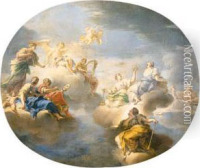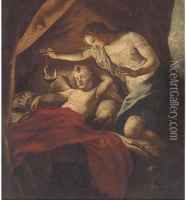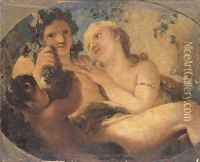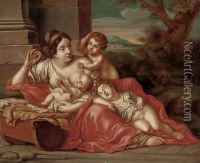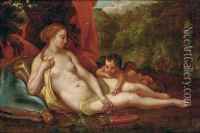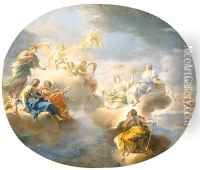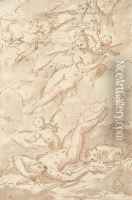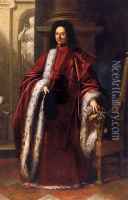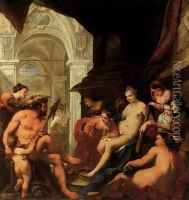Antonio Bellucci Paintings
Antonio Bellucci was an Italian painter of the High Baroque period who was born on February 21, 1654, in Pieve di Soligo, near Venice. He was initially trained in Venice under the tutelage of Domenico Difato. Bellucci's early work is characterized by the influence of Venetian masters such as Paolo Veronese and the vivacious color palette typical of the region's artistic tradition. In his formative years, he absorbed the dynamic style of the Baroque movement, which was sweeping through Europe at the time.
Bellucci's talent soon took him beyond his native Italy. By the 1690s, he had moved to Düsseldorf to work at the court of the Elector Palatine, Johann Wilhelm. There, he gained significant recognition for his work, which included grand historical and allegorical scenes, often with a strong emotional component and a masterful use of chiaroscuro to create dramatic effects.
After a productive period in Germany, Bellucci traveled to England in 1708, where he executed several commissions for Queen Anne. His work was well received, but his stay in England was relatively short. He returned to the continent and continued to work in various locations, including Vienna and Prague. In Vienna, he was particularly appreciated at the court of Emperor Joseph I.
Bellucci's later years saw him back in Italy, where he continued to paint religious subjects and mythological scenes until his death on November 21, 1726, in Pieve di Soligo. His legacy is that of a masterful Baroque painter whose work bridged the Venetian tradition with the evolving styles of Central Europe. His paintings are characterized by their dramatic flair, expressive figures, and rich, vibrant colors.

